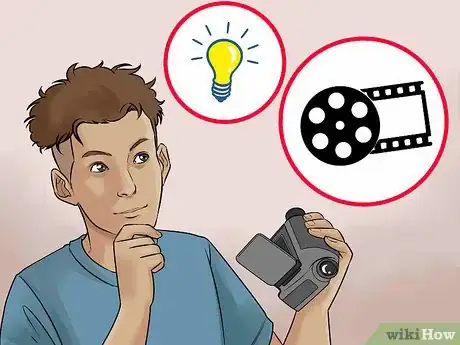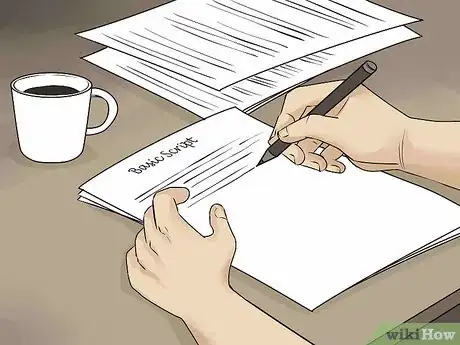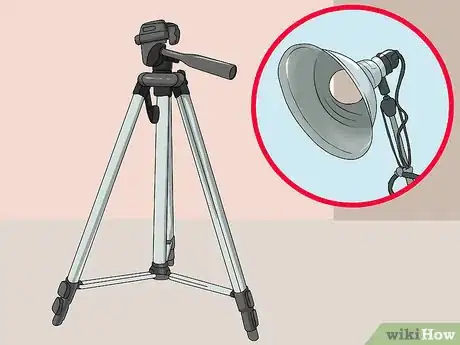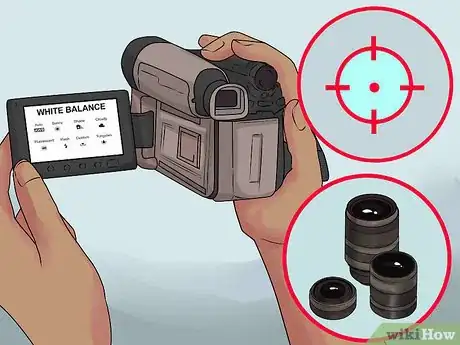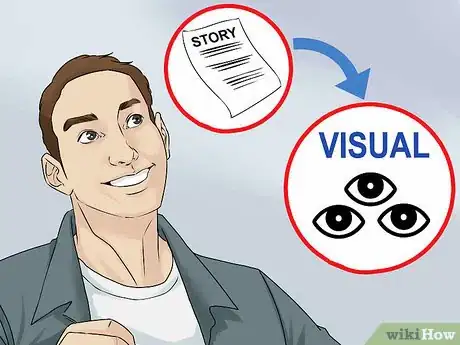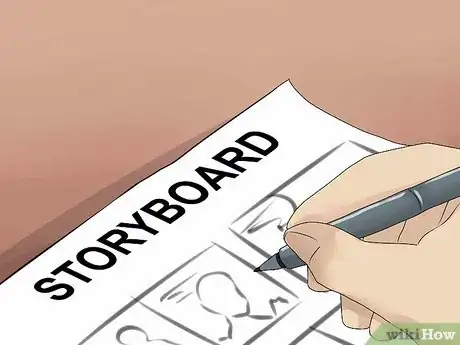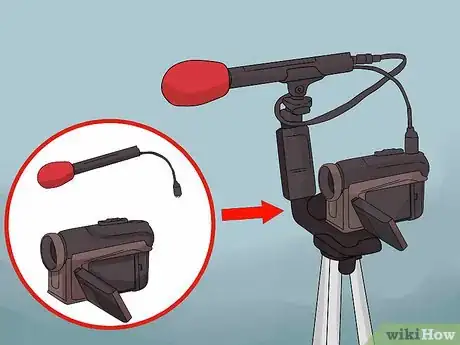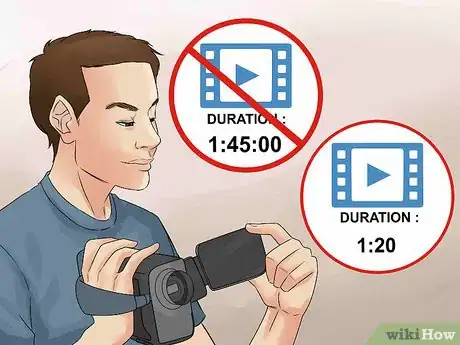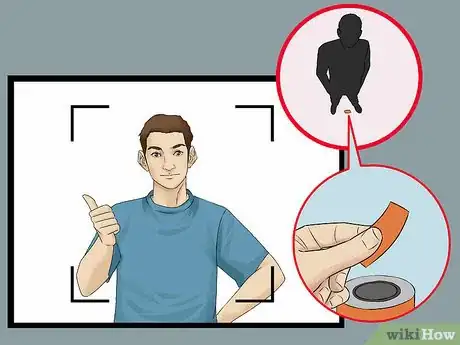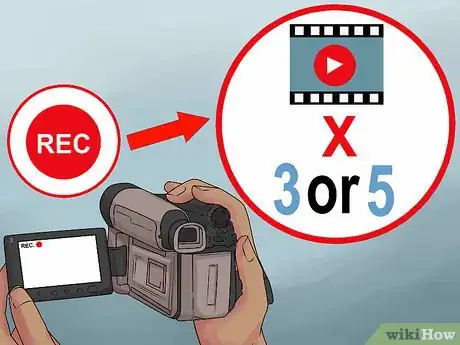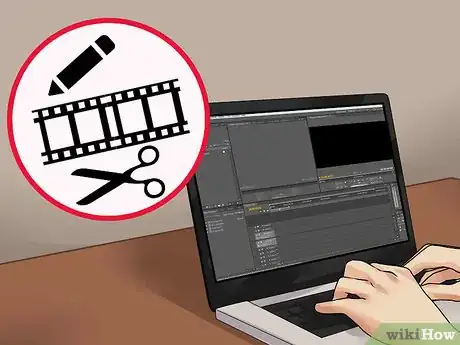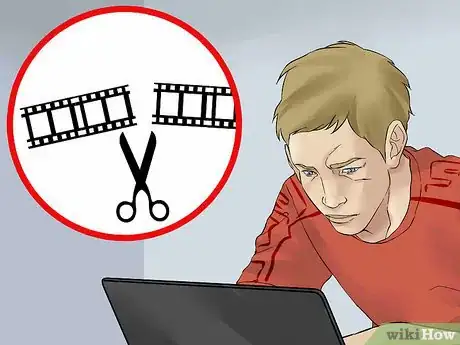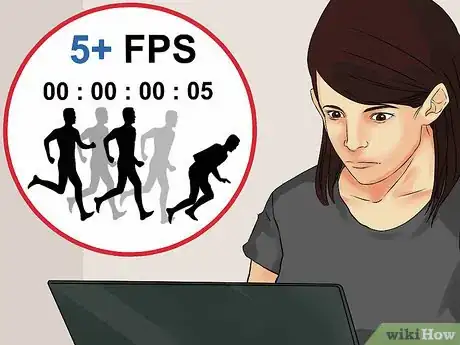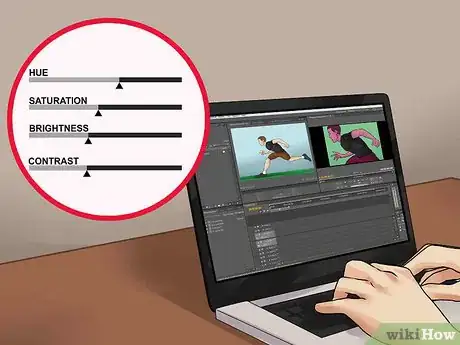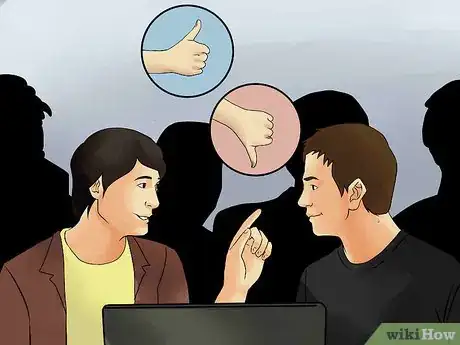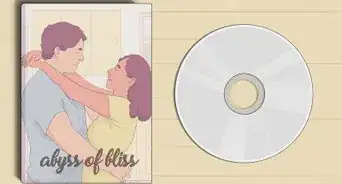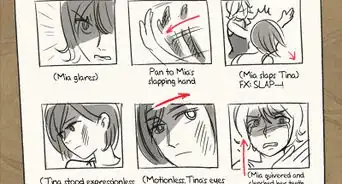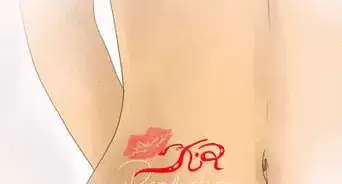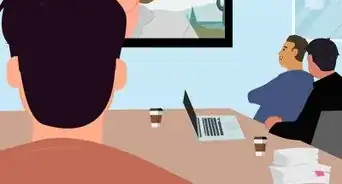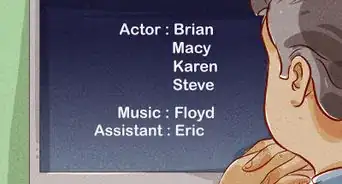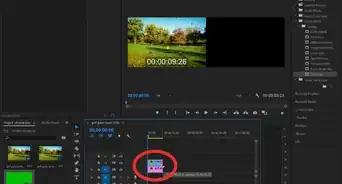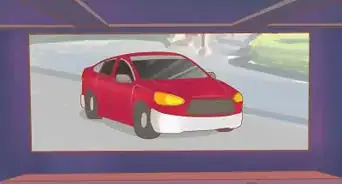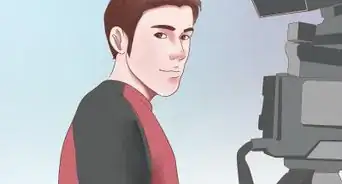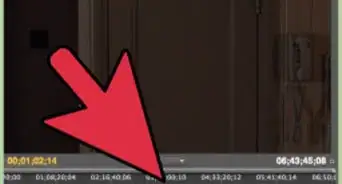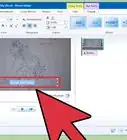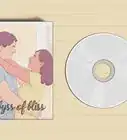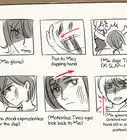This article was co-authored by Kendall Payne. Kendall Payne is a Writer, Director, and Stand-up Comedian based in Brooklyn, New York. Kendall specializes in directing, writing, and producing comedic short films. Her films have screened at Indie Short Fest, Brooklyn Comedy Collective, Channel 101 NY, and 8 Ball TV. She has also written and directed content for the Netflix is a Joke social channels and has written marketing scripts for Between Two Ferns: The Movie, Astronomy Club, Wine Country, Bash Brothers, Stand Up Specials and more. Kendall runs an IRL internet comedy show at Caveat called Extremely Online, and a comedy show for @ssholes called Sugarp!ss at Easy Lover. She studied at the Upright Citizens Brigade Theatre and at New York University (NYU) Tisch in the TV Writing Certificate Program.
There are 10 references cited in this article, which can be found at the bottom of the page.
wikiHow marks an article as reader-approved once it receives enough positive feedback. In this case, 93% of readers who voted found the article helpful, earning it our reader-approved status.
This article has been viewed 191,852 times.
You have a camera, an idea, and everything you need to make your movie, but no actors or crew to help you film it. Whether you're bored and want to film something, want to jazz up a school project, or want to kick off your video career, there are a lot of great ideas you can film without another soul around to help.
Steps
Getting Ready to Film
-
1Come up with a simple, filmable idea. Making a movie by yourself means you'll have to strip away any other actors or any scenes that need multiple people to run. This eliminates most special effects and dialog, unfortunately. But these limitations can be liberating, leading to unique and creative workarounds. Some ideas to consider filming are:
- Art Films: Pioneers like Sadie Benning and Bruce Nauman have made huge contributions to the art world with nothing by a camera and a willingness to experiment. You can do anything from video diaries to abstract videos exploring color or sound. Check out the free Video Data Bank for inspiration.
- Short Documentaries: All you need is a camera and a microphone and you can be on the street interviewing and grabbing footage.
- Talking Heads: Popular on YouTube and in shows like The Office, this is just you talking to your camera, delivering a monologue or performing a sketch. Sometimes this video is set next to a movie or game you are commenting on.
- Stop-motion: Though time consuming, stop-motion is one of the few places a filmmaker can make a professional-looking film all by themselves.
-
2Write out a basic script. It doesn't need to cover the entire story if you are working with a loose idea, but having some ideas of paper will guide you when filming starts. Almost all videos tell a story, in some way shape or form, and almost all stories are broken into three parts:
- The Beginning: Set up the world of your video. It can be you, the character, the location you're shooting on, or simply a color or mood you want to explore.
- The Conflict: Something disturbs, changes, or morphs the original set-up. For art films or smaller pieces, this might just be a change of pace or the introduction of a new theme. The "story" is told through this change.
- The Resolution: How does your story end, what is your message or thought? Some stories just end, but this just implies that nothing has changed in the end.
Advertisement -
3Round up your equipment. All you need is a camera and a way to edit the footage on a computer, but there is additional equipment that will help build a movie by yourself as well:
- A Tripod: If you want to film yourself in a scene, a tripod is the best way to get a steady camera that can be moved, spun, and raised/lowered into a variety of angles.
- Lighting: One of the key differences between amateur-looking movies and professional ones is good lighting. Even 3-4 clamp lights bought at Home Depot can be enough to get strong, consistent lighting in your movie.
EXPERT TIPKendall Payne is a Writer, Director, and Stand-up Comedian based in Brooklyn, New York. Kendall specializes in directing, writing, and producing comedic short films. Her films have screened at Indie Short Fest, Brooklyn Comedy Collective, Channel 101 NY, and 8 Ball TV. She has also written and directed content for the Netflix is a Joke social channels and has written marketing scripts for Between Two Ferns: The Movie, Astronomy Club, Wine Country, Bash Brothers, Stand Up Specials and more. Kendall runs an IRL internet comedy show at Caveat called Extremely Online, and a comedy show for @ssholes called Sugarp!ss at Easy Lover. She studied at the Upright Citizens Brigade Theatre and at New York University (NYU) Tisch in the TV Writing Certificate Program.Writer & Director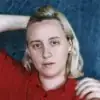
 Kendall Payne
Kendall Payne
Writer & DirectorExpert Trick: When you first start making films, you're not going to have a lot of skills, and you won't have access to a lot of equipment. However, it's important to know that it's okay not to have everything—nobody is expecting you to make a Sundance-worthy film on the first try. Just shoot with whatever you have and put it out there, and hopefully someone will see it and recognize your potential.
-
4Experiment with your camera until you know every feature. If you're making a movie on your own you want as many tricks up your sleeve as possible. Your camera is your best friend, and knowing how to manipulate it will be a big part of making your movie unique and original. The best way to learn is to play, but some things you need to look out for include:
- White Balance: This changes the "temperature" of your film, or the coloring. A properly set white balance ensures that all of your colors look natural. While you can play with white balance to get different visual effects, this is often easier while editing.
- Lenses: Different lenses will profoundly change your shot composition. Play with wide angles, fish eyes, and macro lenses to change up your visuals.
- Focus: Focusing takes a lifetime to master, and you should start now. Focus dictates what part of the shot is clear and which is blurry. Many cameras have automatic focus, but to make great films you need to manually control the focus.[1]
Shooting Your Movie
-
1Focus on telling your story or idea visually. Video is a visual medium, and while voice overs and text are great to get information across they are not incredibly compelling. If you're shooting alone you will not be able to use dialog, actors, or a ton of sound to tell your story. What you have, however, is all the time in the world to set up great shots, capture good video, and work on creating compelling angles.
- Have the mind of a photographer on every shot. Ask yourself if, on its own, the image is interesting.
-
2Make a storyboard of your film. A storyboard is just the comic book version of your movie. They are invaluable ways to design your film, allowing you to "see" the movie before shooting. It then acts as your guidebook to the film. You can find and print templates online, or simply draw out your basic shots in advance with pen and paper.
- Improvising for the camera has it's place, of course. But storyboards are a good way to plan where the camera should go.
-
3Use an external mic instead of the camera microphone. Camera microphones are notoriously bad, and they become useless when the camera is far away from the action. An external microphone will make a huge difference in your production quality, since most audiences notice bad sound before rough video.[2]
-
4Shoot in short bursts, not long single takes, when getting lots of footage. Make discrete, compelling "scenes" instead of turning the camera on and letting it run while you move around. This ensures that you think about each scene individually and it makes editing much easier.[3]
-
5Stay in one place if you are filming yourself. Focus works by sharpening the image at one particularly distance from the camera. If you move around the camera will struggle to keep up, shifting focus or becoming blurry.
- Put down a small piece of tape that tells you where you need to sit or stand for each take.[4]
-
6Get 3-5 times the footage you think you need. Films of any lengths are built in the editing booth.The more raw material, or film, that you have to work with the happier you will be, and the easier it will be to make a great movie. Grab different angles of the same shot, run through different lines, or videotape your environment for atmospheric shots. Every extra shot counts.[5]
- Experiment with shots. Take crazy angles, get weird, abstract shots of everyday objects, and really explore your area with the camera. You may not use the footage, but even grabbing one compelling shot out of 100 will be worth it.
Editing Your Movie
-
1Edit your movie to tell your story or idea, not to be flashy. Editing is one of the most underrated art forms in cinema, but that is almost by design. The best editors are invisible, making their cuts and changes perfectly. As a result, the audience, never has to think about editing. The footage just flows together. When you start editing your movie, make sure you know what the story, point, or thesis of your film is. All of your editing needs to service this idea.[6]
-
2Learn to use cuts to tell your story. Editing version of paint and brushes is the "cut," which is simply when you transition from one shot to another. This is how films tell stories -- the images cut from one to the other, and each cut shows the audience a slight change or progression, like "she enters the building," or "he is talking now." They can be simple or symbolic, such as Stanley Kubrick's famous cut from a tossed bone to a space station in 2001: A Space Odyssey. Knowing how to use cuts to tell your story is vital to film editing.
- Hard Cut-- a cut to another angle or shot with no transitions. This is the most common cut in film.
- Smash Cut- An abrupt shift to completely different scene/image. This calls attention to the cut, often signalling a surprise or big shift in the story.
- Jump Cut-- An abrupt cut made within the same scene, usually to a slightly different angle. Though uncommon, they show confusion or the passing of time.
- J-Cut-- Cutting to the audio of the next shot, but not the video. This is a great way to link two scenes thematically, or provide narration.
- L-Cut-- Cutting to the video of the next shot, but still playing the audio from the old scene. This is a great way to show a character talking about something, like a promise, then doing it (or breaking it).
- Action Cut-- A cut in the middle of some movement. For example, showing a door opening on one room then cutting as it opens to a shot of the same door opening from the other side.
- Superimposition: When two different videos layer on top of each other, implying that they are connected and intertwined. This is often used in transitions, too.[7]
- Matching Shots: When the shape of one video is mimicked in the next. For example, you might have a shot of your eyes, then cut to your eyes in sunglasses or someone else's eyes. This links the shots, but usually hints at some fundamental difference as well.
-
3Think about the rhythm and pacing of your scenes. Many editors think in terms of individual frames -- the still shots you see if you pause the screen -- and compile them like musicians use notes.[8] How does your movie flow? How does the speed of the cuts contribute to the pacing of the video? In general:
- Quick cuts give a scene high energy and propulsive movement.
- Slow, infrequent cuts build tension, suspense, and focus. They slow the movie down, allowing the to viewer contemplate a shot or idea.
- It takes a human brain 3-5 frames to recognize an image. So you may confuse the audience if you try to be too rapid. This, however, could also be the goal.[9]
-
4Take the time to color correct your footage. Color correction is the process of adjusting hue, saturation, brightness, and contrast of each video so that they all look the same. It is hard to get this right by yourself while shooting, so basic color correction while editing is almost always necessary. All video editing software has filters and effects for color correction. Many programs also have automatic correction, but it is often hit or miss.
- You can also play with color correction to get surprising effects or specialty lighting, like soft yellow glows or dangerous, intense red tints.
- If you are looking to submit your film to festivals or events, consider paying for professional color grading.[10]
-
5Watch your film with friends and ask for their opinions. The only way to become a better filmmaker is to share your film with the world. Ask them, in their own words, to explain what they thought happened and comment on what they do and don't like. Brainstorm ways that you could improve it together and try incorporate their suggestions into your next film. Who knows -- maybe they'll help you make it.
References
- ↑ http://www.cnet.com/how-to/how-to-shoot-better-hd-dslr-video/
- ↑ http://www.indiewire.com/article/the-5-people-filmmakers-need-for-a-tiny-skeleton-crew?page=2
- ↑ http://www.cnet.com/how-to/how-to-shoot-better-hd-dslr-video/
- ↑ http://www.videomaker.com/article/12184-shoot-yourself
- ↑ https://sites.google.com/a/msad60.org/video-tutorials/camera-work
- ↑ http://www.nytimes.com/roomfordebate/2014/02/28/the-envelopes-please/film-editing-is-the-invisible-art
- ↑ http://www.peachpit.com/articles/article.aspx?p=2233986&seqNum=4
- ↑ http://www.premiumbeat.com/blog/how-to-edit-a-film-to-music-without-it-becoming-a-music-video/
- ↑ http://www.filmmaking.net/246/Why-a-Director-Shouldnt-Edit-Their-Own-Film/
Community Q&A
-
QuestionHow can I make a movie with several characters, but with only me as the actor?
 Community AnswerYou might find this slightly tricky, but it is possible! Just film yourself as one character, then stop the camera, cut away, and film yourself as another character. You can dress up in different outfits to make it look like there are multiple people playing the different parts, and use different voices and facial expressions.
Community AnswerYou might find this slightly tricky, but it is possible! Just film yourself as one character, then stop the camera, cut away, and film yourself as another character. You can dress up in different outfits to make it look like there are multiple people playing the different parts, and use different voices and facial expressions. -
QuestionWhat should the credits look like if I made the movie by myself?
 Community AnswerYou can either say "Movie Made By (Your Name)" or do all of the credits with your name.
Community AnswerYou can either say "Movie Made By (Your Name)" or do all of the credits with your name. -
QuestionCan you suggest a good editing software?
 Community AnswerThe best I've ever used (it isn't free but it's WELL worth the money) is Adobe Premiere Pro CS6. It's a little confusing at first, but there are many tutorials available online.
Community AnswerThe best I've ever used (it isn't free but it's WELL worth the money) is Adobe Premiere Pro CS6. It's a little confusing at first, but there are many tutorials available online.
Warnings
- Be sure to check for proper permits whenever filming on private property or in large public spaces. You cannot film strangers, even in public, without a film permit from your local tourism office.⧼thumbs_response⧽
About This Article
If you want to make a movie with one person, focus on simple, filmable concepts. Sure, you might not have a full cast and crew to make a big budget film, but many filmmakers have used that limitation as inspiration for some creative workarounds. For example, use artistic expression to make video diaries or abstract videos that experiment with color or sound. If you have the time and focus, grab clay or even action figures and create a stop-motion animation film. No matter what kind of movie you make, take advantage of being alone by taking as much time as you need to get the best shots. For more tips, like how to edit your movie by yourself, read on!
